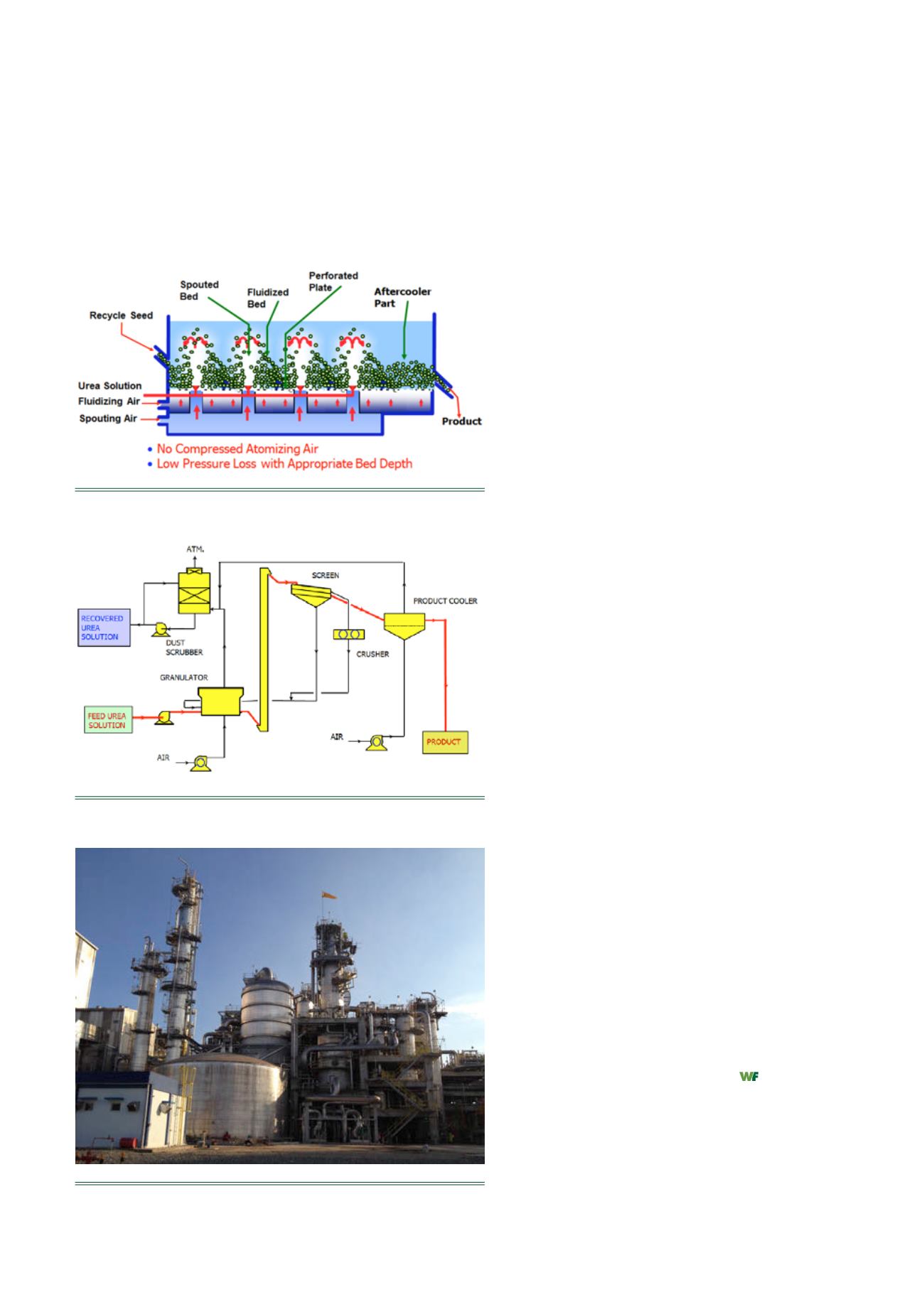
24
| WORLD FERTILIZER |
NOVEMBER 2016
the recycle particles (seeds) in the granulator. The water in
the feed urea solution is evaporated by spouting air onto
the spouted beds, and thereby producing the urea
granules. The enlarged granules are cooled to a suitable
temperature via the cooling function of fluidising air on
the internal fluidised beds in the granulator.
Coarse urea granules produced in the granulator are
screened to separate any over- or under-sized granules.
This is conducted through the double-deck screen.
Small-sized granules are recycled back to the granulator
as the seed and over-sized granules are crushed through
the double roller type crusher and recycled back to the
granulator together with the under-sized granules.
Exhaust air from the granulator and the cooler is
scrubbed in the wet type dust scrubber to recover the
urea dusts. Recovered urea dusts are recycled back to the
urea plant for recovery.
Case study: Kaltim project in Indonesia
In 2011, TOYO was awarded a contract to construct a
2500 tpd ammonia and 3500 tpd urea plant for P.T.
Pupuk Kalimantan Timur (Kaltim). Kaltim is a subsidiary
of state-owned enterprise PT Pupuk Indonesia Holding
Co. The urea plant’s design was based on the ACES21
and the spout-fluid bed granulation process. It is the
largest ammonia/urea complex using a single train in
Southeast Asia. TOYO provided EPC work for the
whole complex.
The new plant is located in Bontang,
East Kalimantan, Indonesia. As Kaltim already owned
four existing ammonia/urea complexes, this project
was named Kaltim No.5 project.
The first urea was achieved in January 2015 and
commercial operations began in August 2015. Table 1
shows the urea plant performance under commercial
operation.
Case Study: Indorama project in Nigeria
TOYO and its consortium partner, Daewoo Nigeria
Ltd, were jointly awarded a contract by Indorama
Eleme Fertilizer and Chemicals Ltd (IEFCL) to build the
world’s largest single train ammonia and urea complex
in Nigeria. The facility has a capacity of 2200 tpd of
ammonia and 4000 tpd of granulated urea from
natural gas feedstock. It employs technology licences
from KBR and TOYO.
The urea plant first produced urea in May 2016 and
started its commercial operation in June 2016. The plant is
currently producing more than 4000 tpd of high-quality
urea granules, as shown in Table 2.
Conclusion
Successful commissioning of the 3500 tpd and
4000 tpd urea plants has demonstrated the
performance and reliability of the ACES21 and the
spout-fluid bed granulation process. TOYO, the only
urea process licensor and engineering contractor that
owns commercially-proven urea synthesis, prilling and
granulation process technologies, will continue
contributing to the fertilizer industry by developing
its urea process, and engineering and constructing
urea plants with the ACES21 technology and the
spout-fluid bed granulation process.
References
1.
MORIKAWA, K., H. and SAKATA, E., “Development of ACES21
Urea Process”, Nitrogen 2000, Vienna, Austria.
Note
ACES21® is a registered trademark of Toyo Engineering Corp. in Japan
(Registered Number 4309123).
Figure 4.
Illustration of spout-fluid bed.
Figure 5.
Granulation process flow.
Figure 6.
The Kaltim project.


